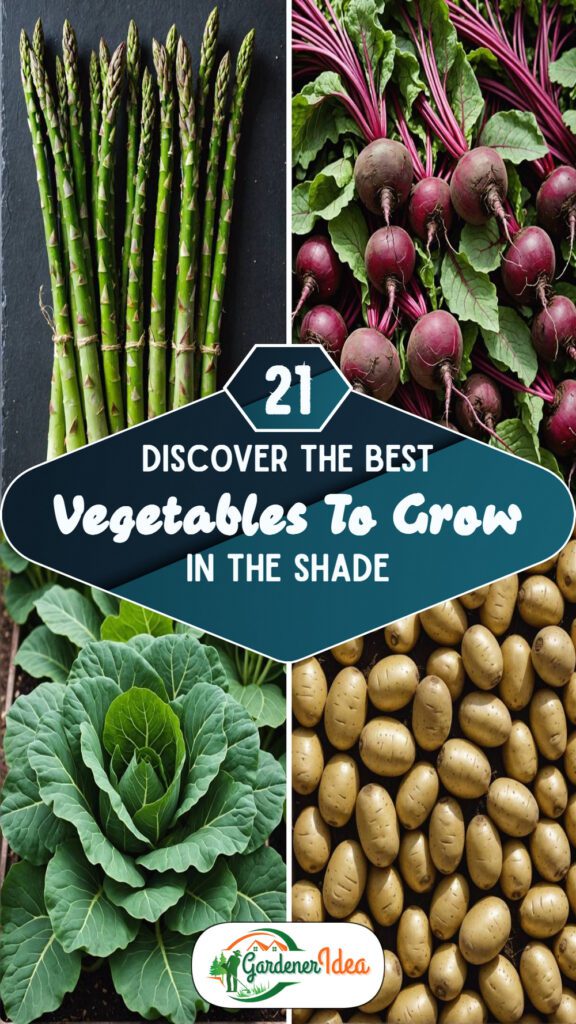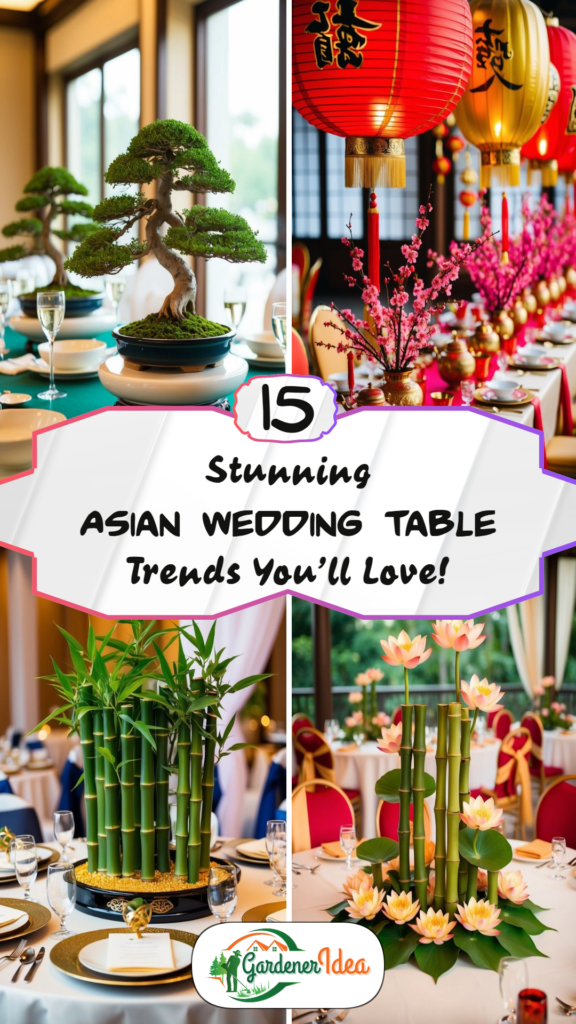My love for gardening knows no shade! In my corner of the world, I’ve discovered 21 remarkable vegetables that thrive in the shaded nooks and crannies.
I absolutely love the range of flavors and colors that these veggies bring to my garden – from the spicy kick of arugula to the rich sweetness of beets, they each have something special to offer.
Let’s explore this verdant world of shade-loving bounty!
Arugula
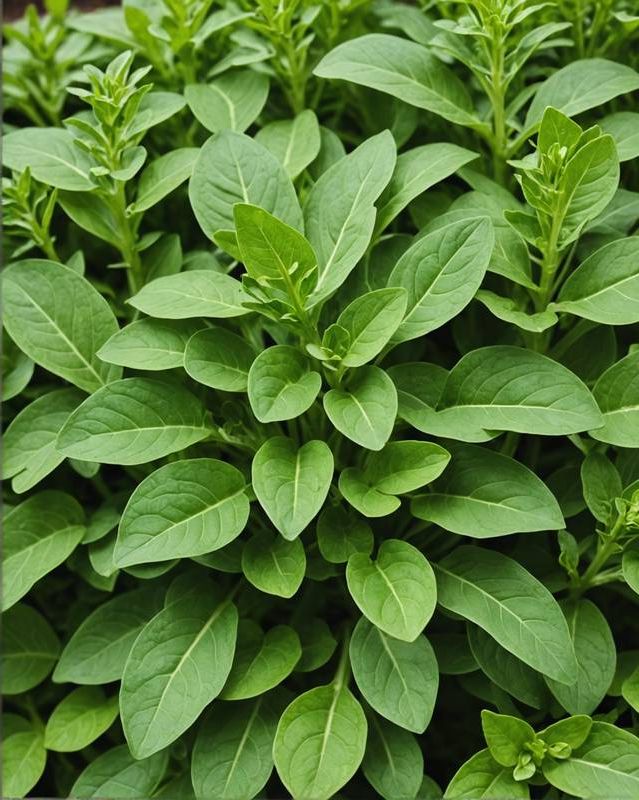
Arugula is a leafy green that thrives in the shade. It has a peppery flavor that makes it perfect for salads, sandwiches, and wraps.
Arugula is easy to grow and can be planted in the early spring or fall.
It prefers well-drained soil that is rich in organic matter. Arugula plants should be spaced about 6 inches apart.
Water regularly, especially during hot weather.
Arugula is actually packed with vitamins A, C, and K, as well as calcium, iron, and potassium. So, eating a little arugula in your salad can be pretty good for you!
Asparagus

Asparagus, a delicious and nutritious vegetable, joins the ranks of shade-tolerant crops.
Its tender spears emerge in spring, offering a welcome addition to early season salads and stir-fries.
Asparagus really enjoys soil that drains well and has lots of organic material in it.
Plant crowns 12 inches apart, allowing ample space for the foliage to spread.
Water consistently to maintain moist soil, but avoid overwatering.
With proper care, asparagus plants will reward you with years of harvests.
Beets

Beets are a great option for shady areas.
They’re tolerant of partial shade and will still produce a good crop of sweet, earthy roots.
Did you know that beets are actually pretty easy to grow in your garden? They’re a great option for beginners who are just starting out with gardening.
To grow beets in the shade, choose a spot that gets at least 4-6 hours of sunlight per day.
Prepare the soil by tilling it to a depth of 12-18 inches and adding compost or other organic matter.
So, when you’re planting those beet seeds, remember to stick them about half an inch deep in the soil and make sure to space them out around 2 to 3 inches apart. That way they’ll have plenty of room to grow nice and healthy!
Water the seeds well and keep the soil moist until the seeds germinate.
Once the seedlings have emerged, thin them out so that they’re spaced 4-6 inches apart.
Make sure you give those beets plenty of water, especially when it’s hot and dry out there. They’ll really appreciate it!
Fertilize the beets every few weeks with a balanced fertilizer.
Beets are ready to harvest when the roots are about 1-2 inches in diameter.
Broccoli
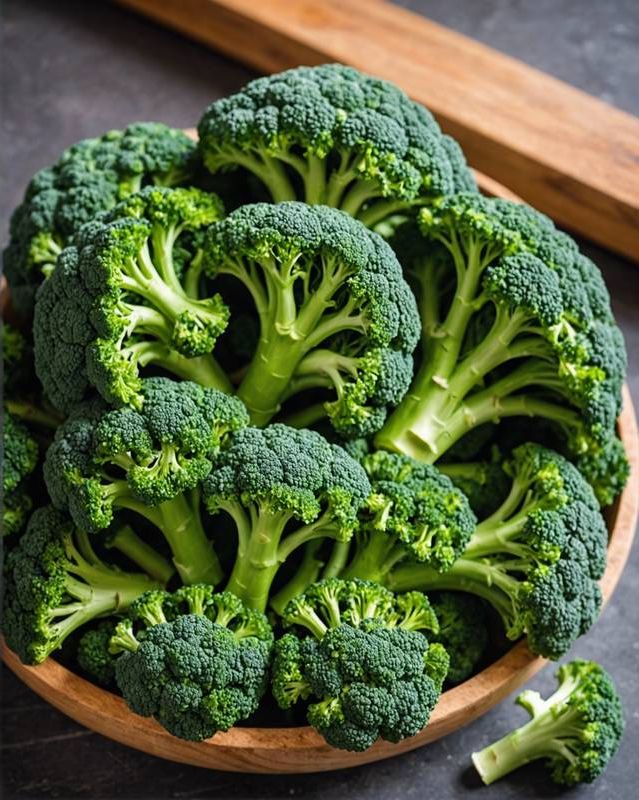
Broccoli, a popular member of the cruciferous family, thrives even in partial shade.
Check out this awesome crop that thrives in cooler weather! It has these beautiful dark green florets and does best in soil that drains well. Make sure to keep the soil consistently moist and give it some regular fertilizing to help it grow its best.
Broccoli’s versatility extends beyond its nutritional value; it adds a slightly bitter but satisfying flavor to salads, stir-fries, and pasta dishes, making it a valuable addition to any shaded garden.
Brussels sprouts

Brussels sprouts are a cool-season crop that can tolerate partial shade.
They are a good source of vitamins A, C, and K, and they are also a good source of fiber.
Did you know you can actually grow Brussels sprouts in pots or in your garden? They’re not too high maintenance either, so you don’t have to worry too much about them!
They should be watered regularly, and they should be fertilized every few weeks.
Brussels sprouts are ready to harvest when the sprouts are about 1-2 inches in diameter.
Cabbage

Did you know that cabbage actually enjoys cooler temperatures and can handle a bit of shade?
It is a good source of vitamins and minerals, and it can be eaten raw, cooked, or fermented.
To grow cabbage in the shade, choose a spot that gets at least six hours of sunlight per day.
The soil should be well-drained and fertile.
Cabbage plants should be spaced 12-18 inches apart.
Water cabbage plants regularly, especially during hot weather.
Make sure to give your plants some fertilizer every few weeks to keep them healthy and thriving. Choose a balanced fertilizer to give them the nutrients they need to grow strong.
Cabbage heads will be ready to harvest in 60-80 days.
Carrots
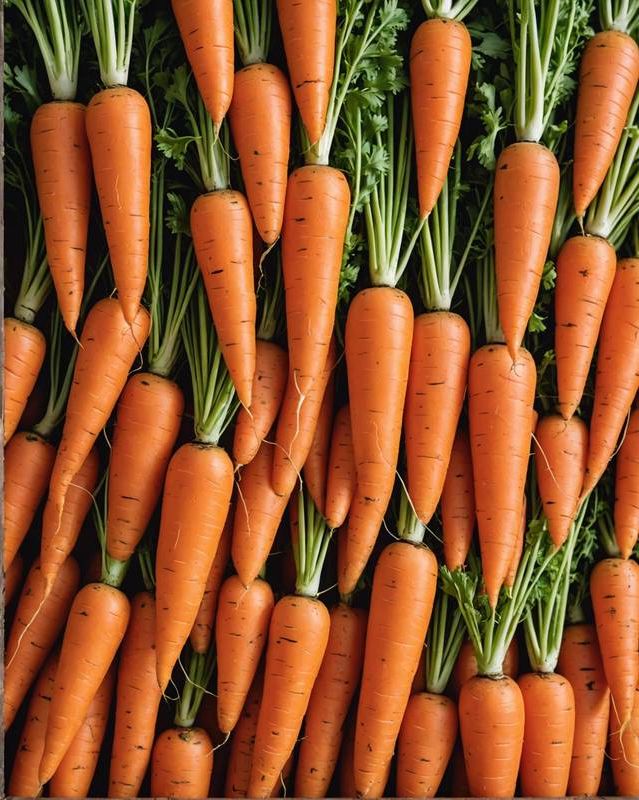
Carrots are awesome to grow in the shade because they’re root veggies and they’re pretty chill about not getting a ton of sunlight.
Carrots are also a good source of vitamin A, which is important for vision.
Carrots are great for keeping you full and happy because they’re packed with fiber. And hey, if you’re thinking about growing some in the shade, just make sure to plant them in some good, well-drained soil!
You should also water them regularly, especially during hot weather.
Did you know that with a little bit of love and attention, you can actually grow a ton of delicious carrots even in the shade? It’s pretty cool, right?
Cauliflower

Cauliflower is a versatile vegetable that can handle some shade, but it prefers full sun.
If you’re thinking of planting cauliflower in a shady area, just make sure to pick a type that can handle less sunlight. You want your veggies to be happy and healthy, even in the shade!
Did you know that cauliflower loves to eat a lot? Make sure to give it some food regularly by fertilizing it!
It also needs consistent moisture, so water it deeply and regularly, especially during hot weather.
Hey there! Did you know that you can actually grow some tasty cauliflower even in a shadier spot in your garden? Just give it some extra TLC and you’ll be enjoying homegrown goodness in no time!
Celery
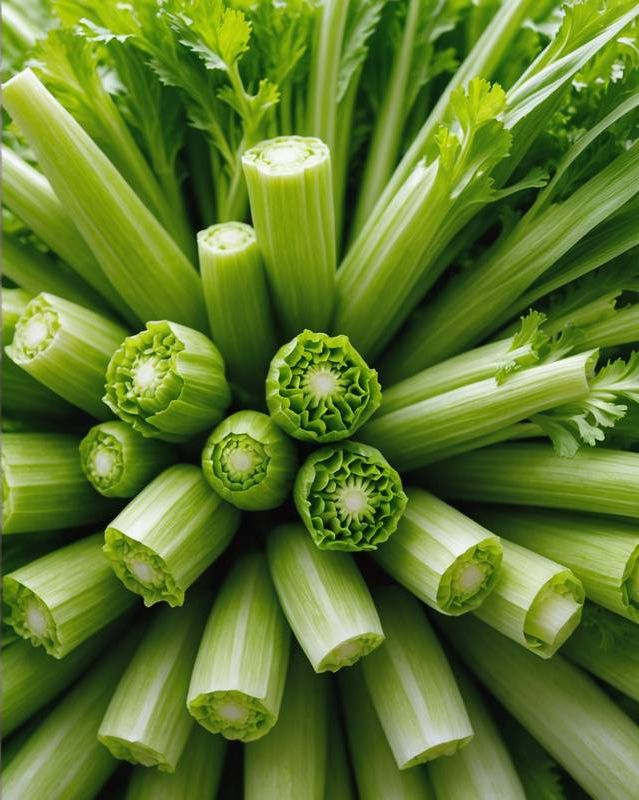
Celery, a member of the carrot family, thrives in shady areas.
Have you ever tried celery? It’s so fresh and delicious! You can enjoy its crunchy stalks in a salad or use them to add flavor to soups and stews. So versatile and tasty!
Celery is a good source of vitamins A, C, and K, as well as potassium and fiber.
To grow celery in the shade, choose a location with well-drained soil that receives at least four hours of sunlight per day.
Plant celery seeds or seedlings in the spring, spacing them about 6 inches apart.
Water celery plants regularly and fertilize them every few weeks with a balanced fertilizer.
Collard greens
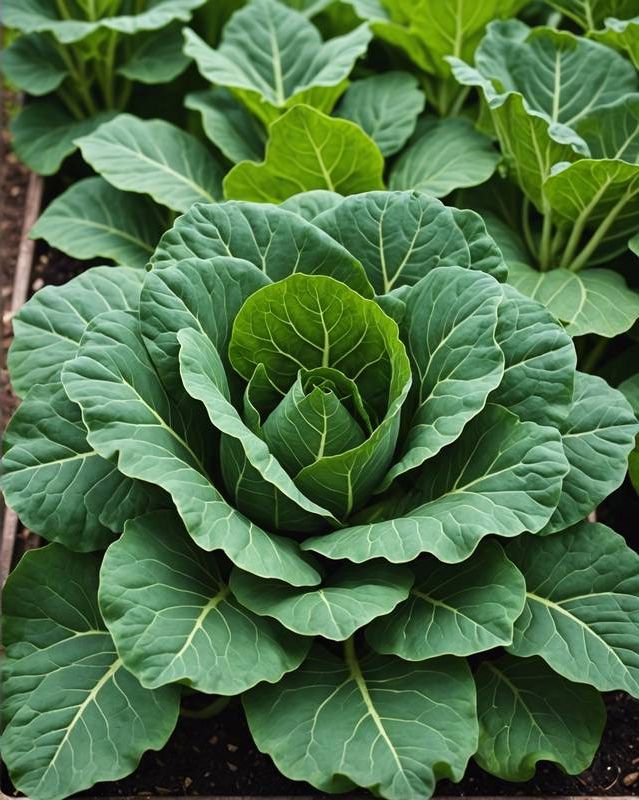
Collard greens are perfect for gardens that don’t get a ton of sun.
They’re a leafy green vegetable that’s packed with nutrients, and they’re relatively easy to grow.
Collard greens prefer well-drained soil that’s rich in organic matter, and they need to be watered regularly.
You can pick them in the spring or fall and enjoy them fresh, cooked, or frozen.
Cress

Do you know about cress? It’s a spicy leafy green that loves to grow in shady spots.
It’s a fast-growing plant that can be ready to harvest in just a few weeks.
Cress is a good source of vitamins A and C, and it’s also a good source of iron.
Cress is easy to grow from seed.
If you can remember to give it some water and keep it out of direct sunlight, it should thrive and be happy!
Cress can be grown in containers or in the ground.
This is a fantastic option for people just starting out with gardening or for anyone looking to incorporate more fresh greens into their meals.
Garlic
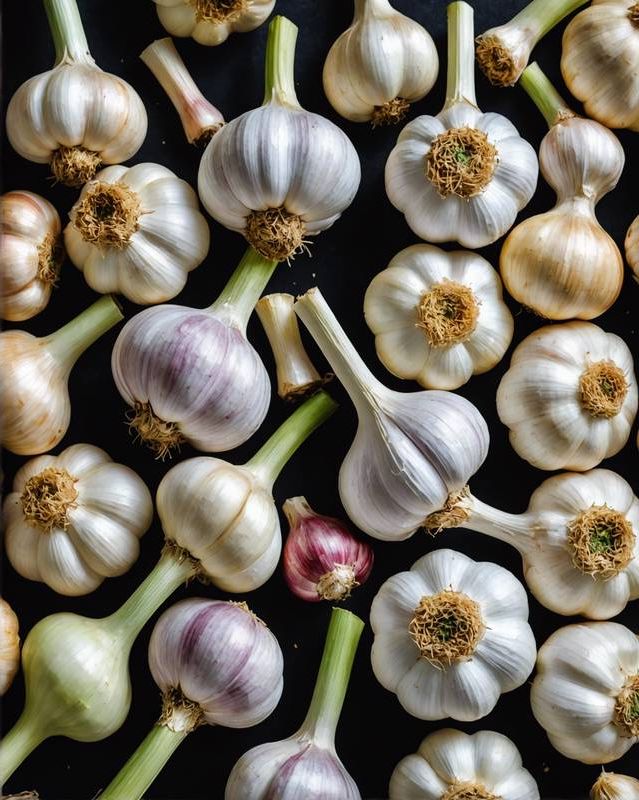
Garlic is a popular bulbous vegetable belonging to the onion family. It’s known for its pungent and aromatic flavor.
While it generally prefers full sun, garlic can also tolerate partial shade, making it a great option for those with limited sunny areas.
Plant garlic cloves in well-drained soil in the fall or early spring. Keep the soil moist but not soggy.
Garlic is actually pretty easy to take care of – just give it a drink when the soil is dry and toss in some fertilizer every now and then.
Hey there! When the leaves of your garlic plants start to turn yellow and the bulbs feel nice and plump, that’s when you know it’s time to harvest them.
Kale

Kale is a leafy green vegetable that thrives in the shade. It’s a great source of vitamins, minerals, and antioxidants.
Kale is also a versatile vegetable that can be eaten raw, cooked, or juiced.
If you’re looking to grow kale in your garden, it’s important to choose a variety that is well-suited for shade. Some good options include: Dwarf Blue Curled Kale Redbor Kale Winterbor Kale Kale is a relatively easy vegetable to grow.
It likes soil that drains well and has lots of good stuff for it to soak up.
Don’t forget to give your kale some water regularly, especially when it’s super hot and dry outside!
Lettuce

Lettuce is another vegetable that tolerates shade fairly well.
It does best in moist, well-drained soil and needs to be watered regularly.
Lettuce is a cool-weather crop, so it should be planted in the spring or fall.
Loose leaf lettuce will require around 6 hours of sunlight, while head lettuce needs around 4 hours of sunlight.
Mushrooms

Mushrooms are a surprisingly easy vegetable to grow in the shade.
They prefer moist, well-drained soil and can be grown in containers or directly in the ground.
Mushrooms are a good source of protein and fiber, and they can be used in a variety of dishes.
In humid environments, they can be grown indoors in containers or on logs.
Mustard greens

Have you ever tried mustard greens? They’re these leafy greens packed with all kinds of nutrients and they actually do really well in shady areas, which is perfect for city gardens that don’t get a lot of sunlight.
Plus, they have this great peppery flavor that can spice up your salads, soups, and stir-fries. It’s like adding a little zing to your dishes!
Their rich green leaves are packed with essential vitamins, including vitamin K, which supports bone health and blood clotting.
Peas

Did you know that peas are such an awesome plant to grow in your garden? They actually thrive in cooler weather and can be grown in shadier spots, making them a perfect choice for those of us who don’t get a ton of sunlight in our yards.
They are a relatively easy vegetable to grow and can be planted in the spring or fall.
Did you know that peas are actually a really great source of vitamins and minerals? Plus, they’re super versatile – you can enjoy them fresh, cooked, or even frozen!
Potatoes
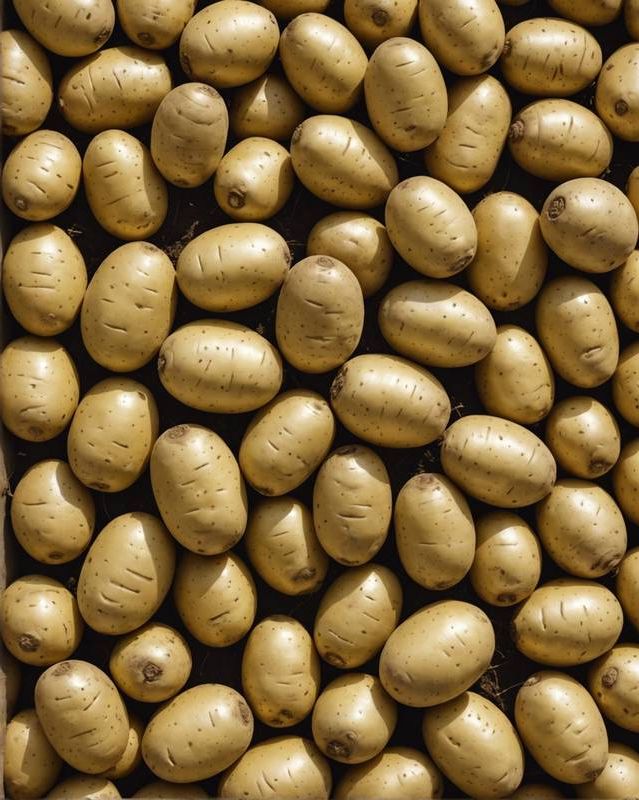
Potatoes require minimal sunlight to thrive and produce a plentiful harvest. They prefer loose soil that allows for easy root growth, making them ideal for shaded areas.
Planting potatoes in a raised bed or container is recommended to ensure proper drainage.
When you’re planting potatoes, make sure to choose seed potatoes that are healthy without any sprouts or spots. Dig trenches about 6 inches deep and give your potatoes some room to grow by spacing them about a foot apart.
Water the plants regularly, especially during dry spells, and fertilize them with organic compost or a balanced fertilizer.
Radishes

Radishes are a quick-growing vegetable that can be ready to harvest in just a few weeks. They are a good source of vitamins A and C, and they have a peppery flavor that can add a nice kick to salads and other dishes.
Radishes can be grown in full sun or partial shade, and they prefer well-drained soil.
They are a good choice for beginner gardeners, as they are easy to grow and produce a quick harvest.
Spinach

Spinach is a versatile leafy green that thrives in the shade. Its dark green leaves are packed with vitamins, minerals, and antioxidants, making it a nutritional powerhouse.
In the garden, spinach is easy to grow and can be planted in early spring or fall.
When growing spinach in the shade, ensure the soil is moist and well-drained. Water regularly, especially during hot, dry weather.
Did you know that with just a little bit of love and attention, you can have delicious, vitamin-packed spinach ready to enjoy for months on end? It’s so rewarding to keep this green goodness in your kitchen!
Swiss chard
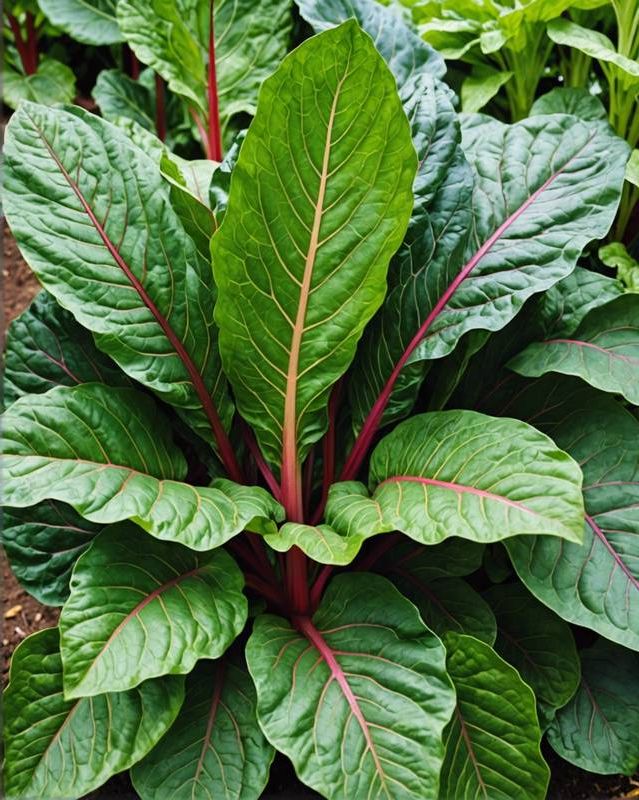
Swiss chard is such a great leafy green – it can actually do well in not-so-bright spots too!
It is packed with vitamins and minerals, making it a nutritious addition to any diet.
Oh man, those big, wrinkly leaves are so versatile! You can totally cook them up in different ways, like sautéing them, steaming them, or throwing them into a salad. What’s your favorite way to enjoy them?
Swiss chard is also a good source of antioxidants, which can help protect against cell damage.

